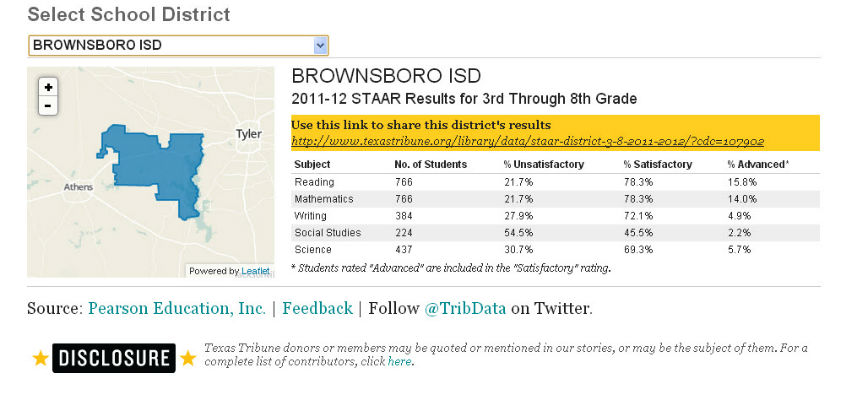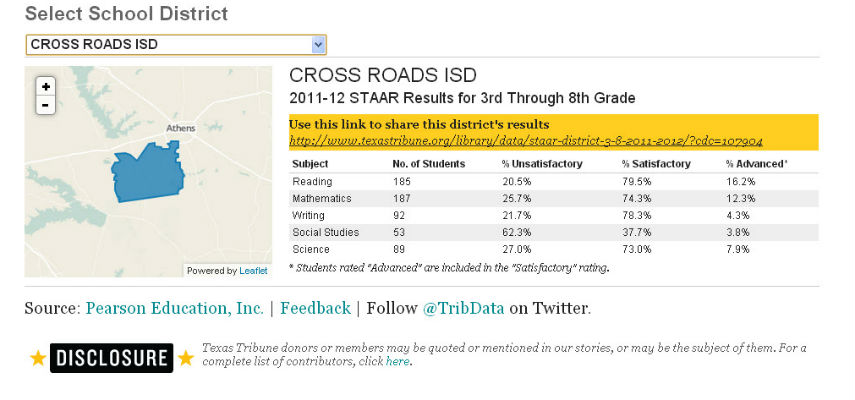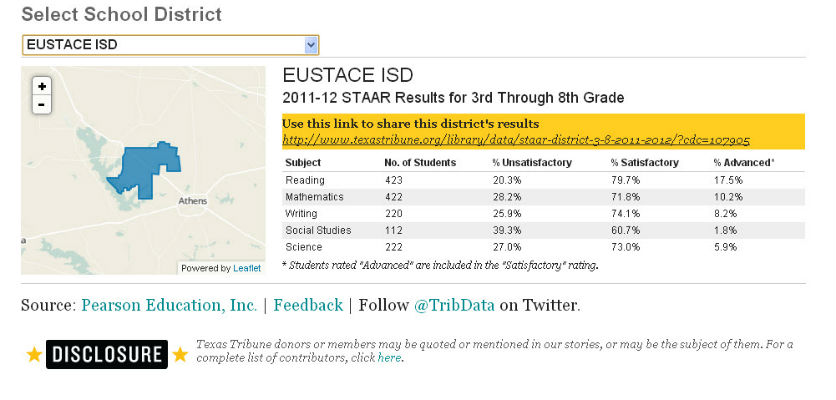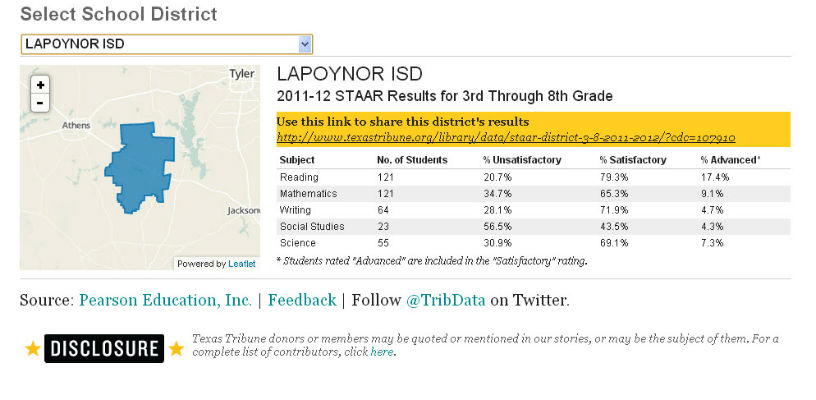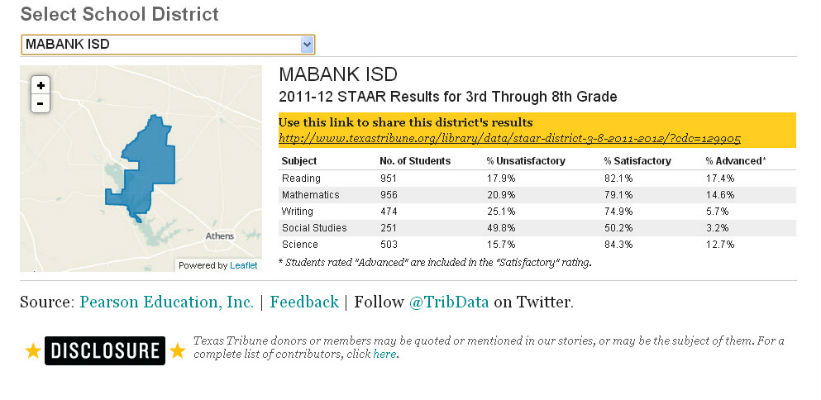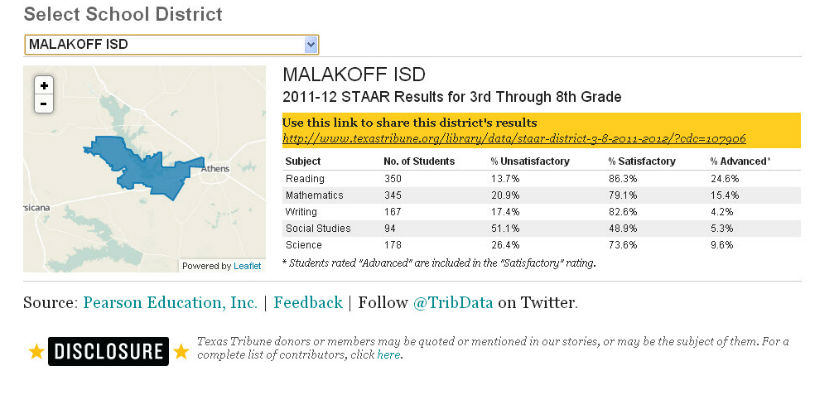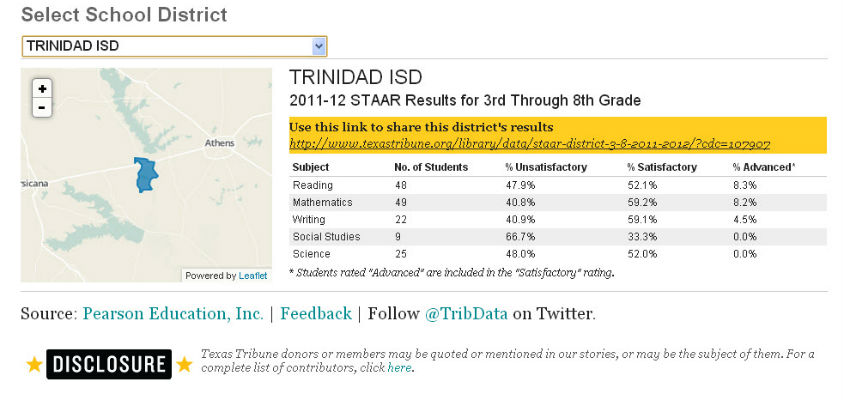In late January, the Texas Education Agency announced the results of the first round of Texas Assessments of Academic Readiness (STAAR) tests for grades 3-8. High school results were released last summer.
I’d hate to say these results were announced quietly … but if the shoe fits, I guess the Texas Education Agency should wear it.
Of course, that might be understandable considering statewide only one grade level in one subject was able to earn what I always thought of as a “B.” In 8th grade reading, 80 percent of students were able to pass the test.
That was the high point.
Other statewide passing rates include (from the TEA website):
- 3rd grade reading: 76 percent
- 3rd grade math: 68 percent
- 4th grade reading: 77 percent
- 4th grade math: 68 percent
- 4th grade writing: 71 percent
- 5th grade reading: 77 percent
- 5th grade math: 77 percent
- 5th grade science: 73 percent
- 6th grade reading: 75 percent
- 6th grade math: 77 percent
- 7th grade reading: 76 percent
- 7th grade math: 71 percent
- 7th grade writing: 71 percent
- 8th grade reading: 80 percent
- 8th grade math: 76 percent
- 8th grade science: 70 percent
- 8th grade social studies: 59 percent
“I recognize there has been a lot of anxiety surrounding STAAR tests, but I believe these are encouraging passing rates for the first year of a new more rigorous test,” said Commissioner of Education Michael L. Williams when the results were announced. “Clearly, we still have work to do, but I remain optimistic that passing rates will rise this spring in the second administration of STAAR, just as they have traditionally done in the second year of a new testing program.”
I hope Williams is right, but I know in my discussions with area superintendents that the state hasn’t done local districts any favors in the way the STAAR has been rolled out.
The fact that educators didn’t even know what constituted passing for elementary and middle school students until midway through the current school year sort of illustrates that point. The same can be said for the massive backlash against the 15 percent rule, which would require that 15 percent of a student’s final grade come from STAAR end-of-course exams. However, the rule has been deferred two straight years and now Henderson County State Rep. Jim Pitts is trying to get rid of it permanently.
Multiple county school boards this past year passed a resolution to send to lawmakers criticizing the “over reliance on standardized, high stakes testing as the only assessment of learning that really matters in the state.”
But it is the law of the land, so below are charts of each of the results for each of the county’s school districts taken from an interactive database provided by the Texas Tribune.


